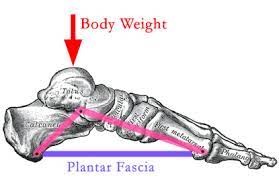Most everyone has heard of plantar fasciitis (PF), especially if you’ve been unfortunate enough to have had it at some point. Let’s take a closer look at its etiology. The plantar fascia is a thick fibrous band that attaches at the bottom of the heel bone and runs along the length of the foot, eventually splaying out and attaching at the metatarsal heads. Its function is to support and stabilize the arch of the foot by absorbing the force we produce while loading the foot.

Although PF pain typically manifests the same (heel pain, typically worse in the morning), the causes of plantar fasciitis are specific to the individual. People with either a high arch or flat foot are at an increased risk of plantar fasciitis due to altered mechanics in the arch. Being overweight or obese also puts increased tension on the tissue. A tight posterior chain of muscles can create a very tight & stiff plantar fascia as well.
 The above image displays how the posterior chain of muscles runs together, so a tight calf equals a tight Achilles tendon equals a tight plantar fascia. One should also consider that excessive foot pronation, or rolling in the foot when walking, can also create extra strain on the PF.
The above image displays how the posterior chain of muscles runs together, so a tight calf equals a tight Achilles tendon equals a tight plantar fascia. One should also consider that excessive foot pronation, or rolling in the foot when walking, can also create extra strain on the PF.
It’s important to note that the PF often is damaged as a result of overuse where repetitive stress causes micro tears in the tissue rather than a singular trauma. This condition usually develops slowly over time, which is part of why it’s tricky to treat. In our next blog, we’ll look at treatment options and how to tailor them to the individual.



